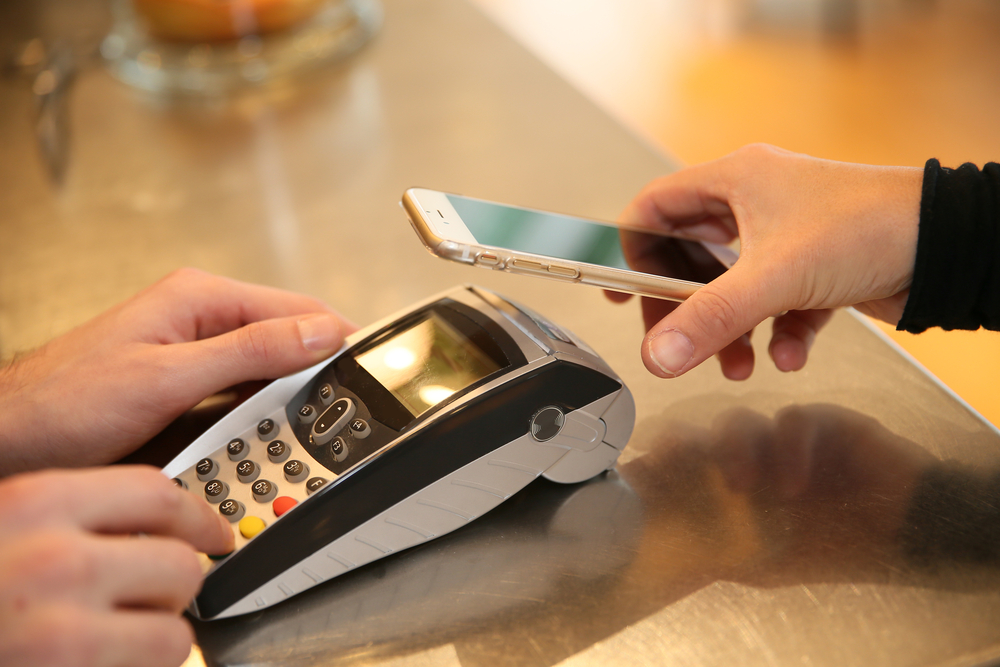The Role of Scanning in Streamlining Retail Operations
Table of contents
In today's fast-paced retail environment, efficiency is not just a goal; it's a necessity. The retail sector, constantly challenged by evolving consumer demands and the need for speed and accuracy, is on a continuous quest for innovative solutions to streamline operations and boost performance. Enter retail scanning solutions, a transformative technology set to redefine the retail landscape. These advanced tools are not only revolutionizing the way retailers manage inventory, space planning, and customer service but are also extending their benefits beyond the retail sector. Architectural firms and construction companies, often dealing with complex projects requiring precision and efficiency, can significantly benefit from the capabilities of retail scanning solutions. By integrating these technologies into their operations, they can enhance project accuracy, streamline processes, and achieve better outcomes, marking a new era of efficiency and innovation in their projects.
Understanding Retail Scanning Solutions
Retail scanning solutions are at the forefront of technological advancement in the retail industry, designed to automate and optimize the myriad of operations that define this fast-paced sector. These solutions encompass a wide range of tools and technologies, from basic barcode scanners to sophisticated systems that integrate RFID (Radio Frequency Identification), computer vision, and real-time data analytics. The essence of retail scanning lies in its ability to capture, analyze, and utilize data in a way that enhances operational efficiency, reduces errors, and improves inventory management.
The Technology Behind Retail Scanning Solutions and Its Evolution
The technology underpinning retail scanning solutions has evolved dramatically over the years. Initially, the focus was on barcode scanning to streamline the checkout process. However, as the retail landscape has become more complex, the technology has expanded to include RFID tags, which allow for tracking items without direct line-of-sight, and advanced imaging technologies capable of recognizing products and even defects. The integration of AI and machine learning algorithms has further propelled these solutions into the future, enabling predictive analytics for inventory management, personalized shopping experiences, and more efficient store layouts.
Benefits of Adopting These Solutions in a Retail Context
Adopting retail scanning solutions offers a multitude of benefits for retailers. These include:
- Enhanced Inventory Management: Real-time tracking and management of stock levels, reducing overstock and stockouts.
- Improved Checkout Efficiency: Faster processing times and reduced queues enhance the customer experience.
- Accurate Data Capture: Minimizes human errors in pricing, stock levels, and during the checkout process.
- Better Customer Insights: Collection and analysis of shopping behavior data to inform marketing strategies and store layouts.
- Cost Savings: Reduction in labor costs associated with manual inventory and data entry processes.
By leveraging these advanced technologies, retailers can achieve a significant competitive advantage, ensuring they meet the demands of modern consumers while optimizing their operations for maximum efficiency and profitability.
The Impact on Architectural Firms and Construction Companies
Retail scanning solutions, though initially developed for the retail sector, have found a significant place in the architectural and construction industries. These technologies offer innovative ways to enhance project planning, execution, and management, transforming traditional practices into highly efficient, accurate, and streamlined processes.
Utilizing Retail Scanning Solutions in Architectural and Construction Projects
Architectural firms and construction companies can leverage retail scanning solutions in several key areas:
- Design and Planning: 3D scanning technologies allow for the creation of accurate digital models of construction sites, facilitating better planning and design. These models can be used to detect potential issues early in the design phase, saving time and resources.
- Inventory and Asset Management: Similar to their use in retail, scanning solutions can track materials and equipment on-site, ensuring that projects stay on schedule and within budget.
- Quality Control and Compliance: Scanning technologies can monitor the construction process, verifying that work complies with architectural specifications and regulatory standards.
Case Studies of Successful Implementation
One notable example is the use of 3D laser scanning by an architectural firm to retrofit an historic building. The technology provided precise measurements that were crucial for preserving the building's structural integrity while accommodating modern utilities. Another case saw a construction company using RFID tags to manage a large inventory of materials across multiple job sites, significantly reducing losses and improving project timelines.
Enhancing Project Accuracy, Efficiency, and Overall Outcomes
The adoption of retail scanning solutions in architectural and construction projects leads to:
- Increased Accuracy: Minimizes errors in measurements and data collection, leading to higher-quality construction and design.
- Enhanced Efficiency: Streamlines processes from planning to execution, reducing project timelines and costs.
- Improved Outcomes: Enables better decision-making through accurate data, resulting in projects that better meet client needs and regulatory requirements.
The integration of these technologies into architectural and construction workflows marks a significant shift towards more innovative, efficient, and effective project management and execution.
Streamlining Retail Operations with Scanning Solutions
In the quest for operational excellence, retail businesses continuously seek innovative methods to enhance efficiency, reduce costs, and improve customer satisfaction. Scanning solutions play a pivotal role in achieving these objectives by optimizing key processes that are critical to retail success.
Optimizing Inventory Management
Inventory management is the cornerstone of retail operations, directly impacting customer satisfaction and financial performance. Scanning solutions revolutionize inventory management by providing real-time visibility into stock levels, facilitating accurate forecasting, and automating reorder processes. This not only reduces the incidence of stockouts and overstock but also enables retailers to respond swiftly to changing market demands, ensuring that the right products are available at the right time.
Enhancing Space Planning
Effective space planning is essential for maximizing sales per square foot—a critical metric in retail. Scanning technologies, including RFID and 3D mapping, offer insights into how space is utilized and how customers interact with it. This data drives strategic decisions regarding store layouts, product placement, and promotional displays, ultimately enhancing the shopping experience and boosting sales.
The Role of Scanning in Enhancing Customer Experience
Scanning solutions extend beyond operational efficiencies to directly benefit the customer. By speeding up the checkout process, enabling personalized promotions through data analysis, and ensuring product availability, these technologies significantly enhance the shopping experience. Moreover, the integration of scanning solutions with mobile applications allows customers to access product information, check availability, and make purchases seamlessly, fostering loyalty and satisfaction.
Integration with Other Technologies
The potential of scanning solutions is magnified when integrated with other cutting-edge technologies like AI, VR, and IoT. For example, AI can analyze the vast amounts of data collected by scanning systems to optimize inventory levels and personalize customer engagement. Similarly, VR can be used to create virtual store layouts, allowing retailers to experiment with space utilization without physical changes. IoT devices, combined with scanning technologies, can further automate operations, from inventory management to environmental monitoring, making retail operations more efficient and responsive.
By harnessing the power of scanning solutions and their integration with other technologies, retailers can achieve a level of operational efficiency and customer engagement that was previously unimaginable. These advancements not only streamline retail operations but also create a dynamic, personalized shopping experience that meets the evolving expectations of today's consumers.
Challenges and Considerations
While the benefits of retail scanning solutions are clear, their adoption is not without challenges. Recognizing and preparing for these hurdles is essential for businesses looking to leverage these technologies effectively.
Common Challenges in Implementing Retail Scanning Solutions
- Cost: The initial investment in retail scanning technology can be significant, particularly for small to medium-sized enterprises. This includes the cost of the hardware, software, and any modifications needed to integrate the new systems into existing operations.
- Training: Implementing new technology requires comprehensive training for staff. Ensuring that employees are comfortable with and knowledgeable about the scanning solutions is crucial for maximizing the benefits of the technology.
- Data Security: As these solutions often involve the collection and analysis of large volumes of data, ensuring the security and privacy of this information is a major concern. Retailers must implement robust security measures to protect sensitive data from breaches.
Strategies to Overcome These Challenges
- Cost-Benefit Analysis: Conducting a thorough cost-benefit analysis can help businesses understand the potential ROI of retail scanning solutions, making the initial investment more justifiable.
- Phased Implementation: Gradually introducing scanning technologies can help manage costs and ease the training process, allowing employees to adapt to new systems over time.
- Investing in Security: Prioritizing data security from the outset, including investing in secure technologies and regular staff training on data protection practices, is essential for safeguarding customer information.
Key Considerations for Architectural Firms and Construction Companies
When choosing a retail scanning solution, architectural firms and construction companies should consider:
- Compatibility: The chosen solution must seamlessly integrate with existing software and systems used by the firm or company.
- Scalability: The technology should be able to grow with the business, accommodating new projects and expanding data needs without requiring a complete system overhaul.
- Support and Maintenance: Reliable support and maintenance services are crucial for resolving any issues promptly and ensuring the long-term success of the implementation.
By carefully considering these challenges and factors, businesses can make informed decisions about adopting retail scanning solutions, ensuring that the benefits far outweigh the initial hurdles.
Future of Retail Scanning Solutions
The landscape of retail scanning technologies is rapidly evolving, driven by advancements in AI, machine learning, IoT, and other cutting-edge fields. These developments promise to not only enhance existing solutions but also introduce new possibilities for efficiency, customer engagement, and data utilization in retail and beyond.
Trends and Innovations Shaping Retail Scanning Technologies
- Artificial Intelligence and Machine Learning: AI and ML are becoming increasingly integral to retail scanning solutions, offering unprecedented insights into consumer behavior, inventory optimization, and predictive analytics. These technologies enable retailers to anticipate customer needs, optimize stock levels, and personalize the shopping experience in real-time.
- Internet of Things (IoT): IoT devices, when integrated with scanning solutions, facilitate a more connected and efficient retail environment. This includes smart shelves that monitor inventory levels, IoT-enabled scanners that track product movement, and sensors that gather customer data for analytics.
- Augmented Reality (AR) and Virtual Reality (VR): AR and VR are set to transform the retail experience, from virtual try-ons to immersive store layouts that can be explored digitally. In the architectural and construction sectors, these technologies allow for detailed, virtual models of projects, improving planning accuracy and client presentations.
Predictions on the Transformation of Retail Operations
The future of retail scanning solutions points towards a more automated, efficient, and personalized retail environment. Inventory management will become more precise and less labor-intensive, checkout processes will be faster and more customer-friendly, and the overall shopping experience will be more engaging and tailored to individual preferences. For architectural firms and construction companies, the integration of scanning technologies promises more accurate project planning, enhanced efficiency in materials management, and improved design outcomes through detailed 3D modeling and virtual walkthroughs.
The Role of Architectural and Construction Industries
As these technologies advance, architectural and construction industries are poised to play a significant role in their development and application. By adopting and adapting these innovations, these sectors can lead the way in demonstrating the practical benefits of retail scanning solutions, from enhanced project accuracy to streamlined operations and beyond.
The future is bright for retail scanning solutions, with potential applications and benefits that extend far beyond the retail sector. As these technologies continue to evolve, they offer the promise of transforming not only how retailers operate but also how architectural and construction projects are planned, executed, and delivered.
Conclusion
The advent of retail scanning solutions has ushered in a new era of efficiency and innovation across industries. For the retail sector, these technologies have become indispensable tools for optimizing inventory management, enhancing the customer experience, and streamlining operations. Beyond retail, architectural firms and construction companies are discovering the transformative potential of scanning solutions in improving project accuracy, efficiency, and outcomes.
As we've explored, the benefits of integrating retail scanning technologies extend from the shop floor to the construction site, offering innovative ways to tackle traditional challenges. Whether through improved inventory management, enhanced space planning, or more accurate project modeling, the impact of these solutions is profound.
However, as with any technological adoption, challenges such as cost, training, and data security must be navigated. Yet, with strategic planning and implementation, the rewards far outweigh the hurdles, paving the way for a more efficient, responsive, and personalized approach to retail and project management.
Embrace the Future with DocCapture's Scanning Solutions
For architectural firms and construction companies looking to harness the power of retail scanning solutions, the future is now. Embracing these technologies can lead to significant competitive advantages, from enhanced project accuracy to streamlined operations and beyond.
We encourage you to explore how DocCapture's cutting-edge scanning solutions can transform your operations. Fill out our "get a quote" form today and take the first step towards redefining efficiency and innovation in your projects.
Share this
You May Also Like
These Related Stories

Banking Reinvented: Document Scanning Elevates Customer Service

Ensuring Legal Retention Compliance Through Digital Recordkeeping

